The Ancient ‘Flying Machines’ Of Icarus and Daedalus
Ellen Lloyd – AncientPages.com - The legend of Icarus and Daedalus, written by the Roman poet Ovid in his work Metamorphoses, is today considered to be a colorful legend, a fiction story.
Is it merely a legend, or does this story tell of actual events?
Some who studied the peculiar legend suggest the story could, in fact, be a testimony of prehistoric aviation.
The Fall of Icarus (1635-7) by Jacob Peter Gowy (c 1615-1661). Credit: Public Domain
Daedalus was a very skilled architect and craftsman. He designed and built the Labyrinth, in which the Minotaur, a monstrous creature, was hidden. Satisfied with what he had accomplished, he wanted to return home, taking his son with him.
However, Daedalus knew that king Mimos would not allow him to leave and that he was shut in by sea. He had to devise an idea of how to flee from king Mimos and his men.
"The king may block my way by land or across the ocean, but the sky, surely, is open, and that is how we shall go, " he thought.
"With these words, he set his mind to sciences never explored before, and altered the laws of nature," according to Ovid.
There was a solution to the problem. They needed to fly to escape from the king and his men.
Daedalus needed to build a flying machine, which is exactly what he did. He constructed two aircraft, one for himself and the other for his son, Icarus. Daedalus gave his son lectures on how to operate the flying vehicle. After that the two of them began their sky travel. The people on the ground who saw these flying machines were astonished.
The author Ovid describes the scene as follows:
"Some fishermen, perhaps plying with his quivering rod, some shepherd leaning on his staff, or a peasant bent over his plow handle caught sight of them as they flew past and stood still in astonishment, believing that these creatures who could fly through the air must be gods."
The two pilots managed to leave Crete and continued their flight across the Aegean Sea, but the most unfortunate accident occurred.
For the young Icarus, the opportunity of being able to fly was such a thrilling experience that he forgot everything his father had told him before the trip.
Pieter Brueghel, Landscape with the Fall of Icarus (c. 1558). Credit: Public Domain
The young man soared higher and higher skywards. He then lost control over the aircraft and was "swallowed up in the deep blue waters, which are now called after him."
If Icarus had not been over-excited, he would not have crashed into the water and would probably have managed to fly all the way home.
Still, one can understand the young man's excitement. Only the gods were privileged to fly, and there he was, an ordinary human, high up in the air, looking down at all things on the ground. No wonder he wanted to get as much as possible out of this unusual experience.
"Among the credulous, the significance of the name of a people of Asia Minor, the Capnobates, 'those who travel by smoke,' gave rise to the assertion that Montgolfier was not first in the field--or instead in the air--since indeed this people must have been responsible for the first hot-air balloons.
Far less questionable is the legend of Icarus, for here, it is possible to trace a foundation of fact in the story.
Such a tribe as Daedalus governed could have had hardly any knowledge of the rudiments of science, and even their ruler, seeing how easy it is for birds to sustain themselves in the air, might be excused for believing that he, if he fashioned wings for himself, could use them.
In that belief, let it be assumed, Daedalus made his wings; the boy, Icarus, learning that his father had determined on an attempt at flight, secured the wings and fastened them to his shoulders. A cliff seemed the likeliest place for a 'take-off,' and Icarus leaped from the cliff edge only to find that possessing wings was not enough to assure flight to a human being.
How can we be sure that the story of Icarus and Daedalus is not just a fable? We have to remember that Daedalus was a master architect, capable of constructing many highly advanced things. When he built his flying machine, he knew exactly how to proceed and was fully aware of what could occur if something went wrong.
That was why he taught his son what he should and should not do.
Some scholars argue Daedalus's knowledge about the aircraft's limitations proves the story's authenticity and represents a perfect example of ancient aviation skills.
Updated on June 29, 2022
Written by - Ellen Lloyd – AncientPages.com
Copyright © AncientPages.com All rights reserved. This material may not be published, broadcast, rewritten or redistributed in whole or part without the express written permission of AncientPages.com
More From Ancient Pages
-
 Revealing 1,200 Years Of Arctic Canadian Cultures And Settlements In Canada
Archaeology | Jul 11, 2024
Revealing 1,200 Years Of Arctic Canadian Cultures And Settlements In Canada
Archaeology | Jul 11, 2024 -
 Riddle How Human’s Uniquely DNA Evolved Solved By Scientists
DNA | Jan 13, 2023
Riddle How Human’s Uniquely DNA Evolved Solved By Scientists
DNA | Jan 13, 2023 -
 Has The Burial Place Of Mysterious Dark Age King Cerdic Of Wessex Been Located?
Archaeology | Apr 23, 2024
Has The Burial Place Of Mysterious Dark Age King Cerdic Of Wessex Been Located?
Archaeology | Apr 23, 2024 -
 Are The Mysterious ‘Ubeidiya Limestone Spheroids Of Early Hominins Evidence Of Intentional Symmetric Geometry?
Archaeology | Sep 6, 2023
Are The Mysterious ‘Ubeidiya Limestone Spheroids Of Early Hominins Evidence Of Intentional Symmetric Geometry?
Archaeology | Sep 6, 2023 -
 Ancient Footprints Offer Evidence Humans Wore Shoes 150,000 Years Ago – Scientists Say
Archaeology | Sep 11, 2023
Ancient Footprints Offer Evidence Humans Wore Shoes 150,000 Years Ago – Scientists Say
Archaeology | Sep 11, 2023 -
 Medicine in Antiquity: From Ancient Temples To Roman Logistics
Archaeology | Apr 13, 2018
Medicine in Antiquity: From Ancient Temples To Roman Logistics
Archaeology | Apr 13, 2018 -
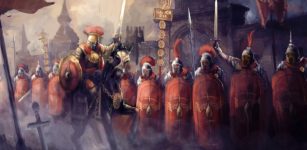 Did Crassus, Ancient Rome’s Wealthiest Man Really Die From Drinking Molten Gold?
Featured Stories | Feb 15, 2017
Did Crassus, Ancient Rome’s Wealthiest Man Really Die From Drinking Molten Gold?
Featured Stories | Feb 15, 2017 -
 First European Farmers’ Heights Did Not Meet Expectations
Archaeology | Apr 8, 2022
First European Farmers’ Heights Did Not Meet Expectations
Archaeology | Apr 8, 2022 -
 Maya Storm God Huracán Taught That When We Damage Nature, We Damage Ourselves
Featured Stories | Oct 4, 2024
Maya Storm God Huracán Taught That When We Damage Nature, We Damage Ourselves
Featured Stories | Oct 4, 2024 -
 Earliest Modern Human Fossil Outside Africa Unearthed At Misliya Cave, Israel
Archaeology | Jan 27, 2018
Earliest Modern Human Fossil Outside Africa Unearthed At Misliya Cave, Israel
Archaeology | Jan 27, 2018 -
 Arrow Pre-Dating The Vikings Discovered After Being Lost In The Ice For 1,500 Years
Archaeology | Aug 25, 2022
Arrow Pre-Dating The Vikings Discovered After Being Lost In The Ice For 1,500 Years
Archaeology | Aug 25, 2022 -
 The Phoenicians – And Their Great Experience As Sea Traders
Civilizations | Sep 6, 2015
The Phoenicians – And Their Great Experience As Sea Traders
Civilizations | Sep 6, 2015 -
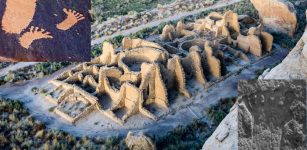 Ancient People In Chaco Canyon Who Had Six Fingers And Six Toes Were Special – Researchers Say
Archaeology | Mar 16, 2022
Ancient People In Chaco Canyon Who Had Six Fingers And Six Toes Were Special – Researchers Say
Archaeology | Mar 16, 2022 -
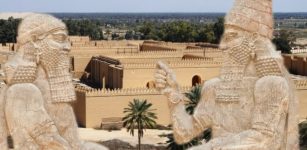 Mysterious Death Of Cambyses II – Natural, Suicide Or Assassination By Darius I The Great?
Featured Stories | Apr 21, 2021
Mysterious Death Of Cambyses II – Natural, Suicide Or Assassination By Darius I The Great?
Featured Stories | Apr 21, 2021 -
 On This Day In History: Battle Of Las Navas De Tolosa Was Fought – On July 16, 1212
News | Jul 16, 2016
On This Day In History: Battle Of Las Navas De Tolosa Was Fought – On July 16, 1212
News | Jul 16, 2016 -
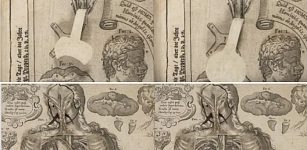 17th Century Medical Pop-Up Book Digitized
Archaeology | Jan 16, 2016
17th Century Medical Pop-Up Book Digitized
Archaeology | Jan 16, 2016 -
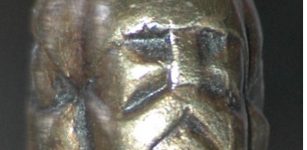 Triglav (Trzygłów) – Powerful Three-Headed Slavic God Of Vigilance, Sea Storms Who Supervised Sky, Earth, And Underworld
Featured Stories | Nov 11, 2019
Triglav (Trzygłów) – Powerful Three-Headed Slavic God Of Vigilance, Sea Storms Who Supervised Sky, Earth, And Underworld
Featured Stories | Nov 11, 2019 -
 Sacred Crystals Of The Cherokee – Myths, Traditions And History Explained
Featured Stories | Jun 3, 2019
Sacred Crystals Of The Cherokee – Myths, Traditions And History Explained
Featured Stories | Jun 3, 2019 -
 Michael Scott – Fascinating Wizard Who Tutored The Holy Roman Emperor Frederick II
Featured Stories | Mar 7, 2025
Michael Scott – Fascinating Wizard Who Tutored The Holy Roman Emperor Frederick II
Featured Stories | Mar 7, 2025 -
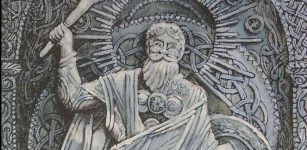 Veles And Perun: Most Powerful Slavic Gods In Conflict Between Powers Of Light And Darkness
Featured Stories | Jun 26, 2017
Veles And Perun: Most Powerful Slavic Gods In Conflict Between Powers Of Light And Darkness
Featured Stories | Jun 26, 2017


